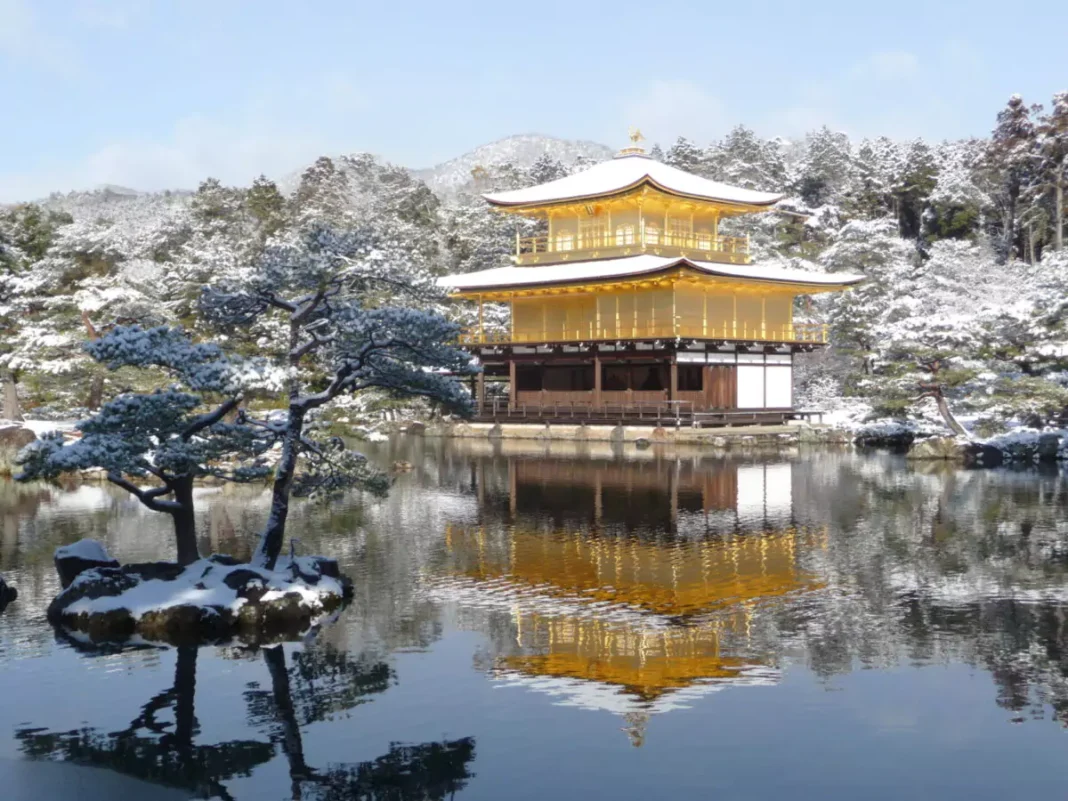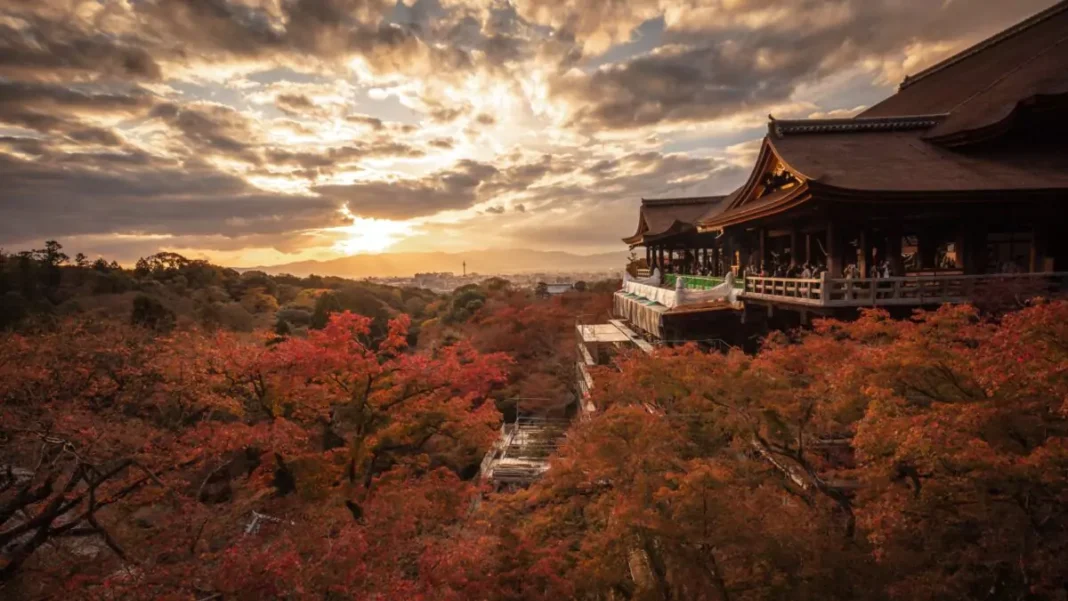Kyoto, the ancient capital of Japan, is a city steeped in history and tradition. With countless temples, shrines, and castles, it offers a captivating glimpse into the country’s rich cultural heritage. This guide will take you on a journey through Kyoto’s most iconic historical sites, providing practical information and insider tips to help you plan your trip.
Exploring Kyoto’s Ancient Temples
Kyoto is renowned for its breathtaking temples, each with its unique history, architecture, and spiritual significance. These historical sites are essential to understanding the city’s past. To begin with, here are some of the must-visit temples in the city:
Kiyomizu-dera Temple: A UNESCO World Heritage Site
Address: 1-294 Kiyomizu, Higashiyama-ku, Kyoto Hours: 6:00 AM – 6:00 PM (hours may vary depending on the season) Contact: +81 75-551-1234
Perched on a hillside with panoramic views of the city, Kiyomizu-dera Temple is a UNESCO World Heritage Site and one of Kyoto’s most iconic historical sites. Founded in 778, the temple is known for its wooden stage that juts out from the main hall, offering stunning vistas of the surrounding landscape.
Tips for Visiting Kiyomizu-dera:
- Arrive early: To avoid the crowds, try to arrive early in the morning or late in the afternoon.
- Wear comfortable shoes: There are many steps to climb to reach the temple.
- Explore the Otowa Waterfall: Moreover, located at the base of the temple, the waterfall is said to have wish-granting powers.
Kinkaku-ji Temple: The Golden Pavilion
Address: 1 Kinkakujicho, Kita-ku, Kyoto Hours: 9:00 AM – 5:00 PM Contact: +81 75-461-0013
Kinkaku-ji, also known as the Golden Pavilion, is a Zen temple covered entirely in gold leaf. Its reflection shimmering on the mirrored surface of the pond creates a truly mesmerizing sight. This historical site was originally built as a retirement villa for a shogun but was converted into a Zen temple after his death.
Tips for Visiting Kinkaku-ji:
- Visit in the morning: The golden pavilion is especially beautiful in the morning light.
- Stroll through the gardens: In addition, the temple gardens are a peaceful oasis, offering a tranquil escape from the city.
Ginkaku-ji Temple: The Silver Pavilion, a Historical Site of Serenity
Address: 2 Ginkakujicho, Sakyo-ku, Kyoto Hours: 8:30 AM – 5:00 PM (March to November), 9:00 AM – 4:30 PM (December to February) Contact: +81 75-771-5725
While not actually covered in silver, Ginkaku-ji, or the Silver Pavilion, is a beautiful Zen temple with stunning gardens. This historical site was built by the shogun Ashikaga Yoshimasa as a counterpart to Kinkaku-ji. Although the original plan to cover it in silver leaf never materialized, Ginkaku-ji is still a remarkable sight.
Tips for Visiting Ginkaku-ji:
- Explore the moss garden: The temple’s moss garden is a highlight, offering a serene and contemplative atmosphere.
- Walk the Philosopher’s Path: Furthermore, this scenic path connects Ginkaku-ji with Nanzen-ji Temple and is a lovely place for a stroll.
Ryoan-ji Temple: The Temple of the Dragon at Peace, a Historical Site of Zen
Address: 13 Ryoanji Goryonoshitacho, Ukyo-ku, Kyoto Hours: 8:00 AM – 5:00 PM (March to November), 8:30 AM – 4:30 PM (December to February) Contact: +81 75-463-2216
Famous for its enigmatic rock garden, Ryoan-ji Temple is a Zen temple that invites contemplation and reflection. The garden features 15 rocks arranged on a white gravel bed, and their arrangement is said to have a calming effect on the mind. This historical site is a testament to the power of simplicity and the beauty of nature.
Tips for Visiting Ryoan-ji:
- Find your own meaning: The rock garden is open to interpretation, so take your time to contemplate its meaning.
- Visit the temple’s other gardens: Likewise, Ryoan-ji also has beautiful traditional Japanese gardens.
Other Notable Temples and Historical Sites in Kyoto
Furthermore, Kyoto is home to countless other temples worth exploring, including:
- To-ji Temple: Known for its five-story pagoda, the tallest wooden tower in Japan. This historical site offers a glimpse into ancient Buddhist architecture.
- Fushimi Inari-taisha Shrine: Famous for its thousands of red torii gates that wind through the forest. This Shinto shrine is a significant historical and cultural landmark.
- Sanjusangen-do Temple: Houses 1,001 statues of Kannon, the Buddhist goddess of mercy. This historical site provides insight into Buddhist beliefs and practices.
Discovering Kyoto’s Serene Shrines: Exploring Historical Sites of Spiritual Significance
In addition to its temples, Kyoto boasts numerous Shinto shrines, places of worship dedicated to various deities and spirits. These historical sites offer a unique perspective on Japanese religious beliefs and practices. Here, are some of the most notable shrines in the city:
Fushimi Inari-taisha Shrine: A Thousand Torii Gates Leading to a Historical Site
Address: 68 Fukakusa Yabunouchicho, Fushimi-ku, Kyoto Hours: Open 24 hours Contact: +81 75-641-7331
Fushimi Inari-taisha Shrine is one of Kyoto’s most popular tourist destinations and historical sites, known for its thousands of vibrant red torii gates that wind their way up the mountainside. The shrine is dedicated to Inari, the Shinto god of rice and prosperity.
Tips for Visiting Fushimi Inari-taisha:
- Hike to the summit: The hike to the top of Mount Inari takes about 2-3 hours and offers stunning views of the city.
- Visit early or late: Alternatively, to avoid the crowds, try to visit early in the morning or late in the afternoon.
- Respect the sacred space: Above all, remember that Fushimi Inari-taisha is a place of worship, so be respectful of the shrine and its traditions.
Yasaka Shrine: The Gion Shrine, a Historical Site in the Heart of Kyoto
Address: 625 Gionmachi Kitagawa, Higashiyama-ku, Kyoto Hours: Open 24 hours Contact: +81 75-561-6155
Located in the heart of the Gion district, Yasaka Shrine is a vibrant and bustling shrine dedicated to the god of prosperity and good health. This historical site is deeply intertwined with the cultural fabric of the city. Consequently, the shrine is particularly lively during the Gion Matsuri festival in July.
Tips for Visiting Yasaka Shrine:
- Explore the Gion district: The Gion district is known for its traditional wooden houses and geisha culture.
- Visit during the Gion Matsuri: Specifically, if you’re in Kyoto in July, don’t miss the Gion Matsuri, one of Japan’s most famous festivals.
Heian Jingu Shrine: A Modern Shrine with Historical Significance
Address: Okazaki Nishitennocho, Sakyo-ku, Kyoto Hours: 6:00 AM – 5:00 PM (April to September), 6:00 AM – 4:30 PM (October to March) Contact: +81 75-761-0221
Built in 1895 to commemorate the 1,100th anniversary of the founding of Kyoto, Heian Jingu Shrine is a relatively modern shrine with a striking vermillion-colored main hall. However, its historical significance is undeniable, as it is dedicated to Emperor Kammu, the founder of Kyoto, and Emperor Komei, the last emperor to reside in the city.
Tips for Visiting Heian Jingu Shrine:
- Stroll through the gardens: The shrine’s gardens are a beautiful example of traditional Japanese landscaping.
- Visit during the Jidai Matsuri: For example, this historical festival, held in October, features a procession of people dressed in costumes from different periods of Japanese history.
Stepping into History at Kyoto’s Castles: Exploring Significant Historical Sites
Similarly, Kyoto is also home to several impressive castles, each with its own unique history and architectural style. These historical sites provide a fascinating glimpse into the lives of the ruling class and the military history of Japan. Here, are some of the must-see castles in the city:
Nijo Castle: The Shogun’s Palace, a Historical Site of Power
Address: 541 Nijojocho, Nakagyo-ku, Kyoto Hours: 8:45 AM – 5:00 PM (last entry at 4:00 PM) Contact: +81 75-841-0096
Nijo Castle was built in the 17th century as the residence of the Tokugawa shoguns. The castle is known for its opulent Ninomaru Palace, with its lavishly decorated rooms and “nightingale floors” that chirp when walked upon. This historical site is a testament to the power and wealth of the shogunate.
Tips for Visiting Nijo Castle:
- Take a guided tour: Guided tours are available in English and provide insights into the castle’s history and significance.
- Explore the gardens: Additionally, the castle gardens are a peaceful oasis, offering a tranquil escape from the city.
Fushimi Momoyama Castle: The Hideyoshi’s Legacy, a Historical Site with a Rich Past
Address: 1 Momoyamacho, Fushimi-ku, Kyoto Hours: 9:00 AM – 4:30 PM Contact: +81 75-602-1426
Fushimi Momoyama Castle was built in the late 16th century by Toyotomi Hideyoshi, one of Japan’s most powerful feudal lords. Although the original castle was destroyed by fire, a replica was built in 1964. Nevertheless, this historical site still holds great significance due to its connection to Hideyoshi and the tumultuous period of Japanese history he dominated.
Tips for Visiting Fushimi Momoyama Castle:
- Enjoy the panoramic views: The castle offers stunning views of the surrounding area.
- Learn about Hideyoshi’s history: For instance, the castle museum houses exhibits on Hideyoshi’s life and accomplishments.
Practical Tips for Exploring Kyoto’s Historical Sites
- Purchase a Kyoto City Bus One-day Pass: This pass offers unlimited travel on city buses and subways, making it a convenient and cost-effective way to get around.
- Rent a bicycle: Kyoto is a relatively flat city, making it ideal for exploring by bicycle.
- Dress respectfully: When visiting temples and shrines, dress modestly and avoid wearing revealing clothing.
- Remove your shoes: Before entering, temple and shrine buildings, you will need to remove your shoes.
- Be mindful of photography rules: Some temples and shrines restrict photography, so be sure to check the rules before taking pictures.
Essential Japanese Phrases for Travelers in Kyoto
Greetings
- Hello: Konnichiwa (こんにちわ)
- Good morning: Ohayo gozaimasu (おはようございます)
- Good evening: Konbanwa (こんばんは)
- Thank you: Arigato gozaimasu (ありがとうございます)
- You’re welcome: Do itashimashite (どういたしまして)
Directions
- Excuse me: Sumimasen (すみません)
- Where is [place]?: [Place] wa doko desu ka? ([Place]はどこですか?)
- To the right: Migi e (右へ)
- To the left: Hidari e (左へ)
- Straight ahead: Massugu (まっすぐ)
Dining
- I would like to order: Chumon o onegai shimasu (注文をお願いします)
- Delicious: Oishii desu (おいしいです)
- Water, please: Ohiya o kudasai (お水をください)
- Check, please: Okaikei o kudasai (お会計をお願いします)
Emergencies
- Help!: Tasukete! (助けて!)
- I need a doctor: Isha o yonde kudasai (医者を呼んでください)
- Police: Keisatsu (警察)
Real-Life Stories: Unforgettable Experiences at Kyoto’s Historical Sites
Many travelers have shared their unforgettable experiences exploring Kyoto’s historical sites. Here are a few examples:
- A spiritual awakening at Kiyomizu-dera: One traveler described feeling a sense of peace and tranquility while standing on the temple’s wooden stage, overlooking the city. This historical site has a profound impact on many visitors.
- A moment of zen at Ryoan-ji: Similarly, another traveler shared how they found themselves lost in contemplation while gazing at the temple’s enigmatic rock garden. The historical significance of this site adds to its contemplative atmosphere.
- A cultural immersion in Gion: Finally, a traveler recounted their experience wandering through the Gion district, encountering geisha and experiencing the traditional atmosphere. This historical district offers a unique glimpse into traditional Japanese culture.
Beyond the Temples and Shrines: Exploring Kyoto’s Other Attractions
In addition to the numerous temples, shrines, and castles, Kyoto offers a wealth of other attractions, including:
- Nishiki Market: A bustling market with hundreds of stalls selling fresh produce, seafood, and local delicacies.
- Arashiyama Bamboo Grove: A serene bamboo forest that offers a tranquil escape from the city.
- Gion district: A historic district known for its traditional wooden houses and geisha culture.
- Kyoto Imperial Palace: The former residence of the Emperor of Japan.
- Kyoto National Museum: Houses a vast collection of Japanese art and artifacts.
Conclusion
Kyoto’s historical sites offer a captivating glimpse into Japan’s rich cultural heritage. From ancient temples and serene shrines to majestic castles, there is something to fascinate every traveler. Ultimately, by exploring these historical sites, you can gain a deeper understanding of Japanese history, culture, and spirituality.











